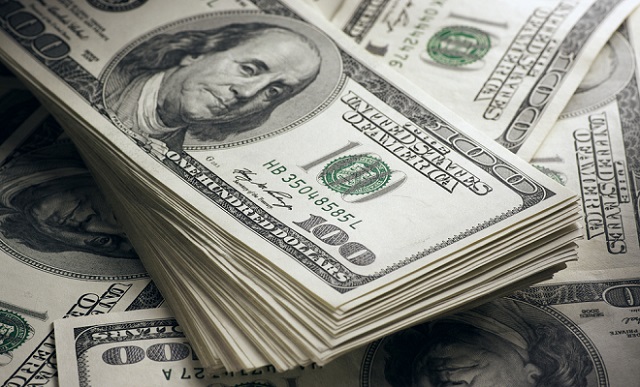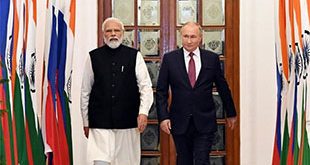
Washington, U.S. | Xinhua | The U.S. central bank raised the benchmark lending rate by 0.75 percentage point last week, the fourth increase of that size and the sixth hike this year, bringing its key rate into a range of 3.75 percent to 4 percent, the highest in 15 years.
The Federal Reserve claimed such hikes necessary to ease record-high inflation. Still, before the previous aggressive currency policies show results at home, they have already wreaked havoc globally, given the dollar’s dominance in the international monetary and trade system.
Following the U.S. interest rate hikes, many countries have suffered the devaluation of their currencies, capital outflows, rising debt service costs and intensified imported inflation. Some have even fallen into a currency or debt crisis.
Once again, the words of former U.S. Treasury Secretary John Connally in 1971 ring true: “The dollar is our currency, but it’s your problem.”
After overcoming waves of instability and the uncertainty of self-serving U.S. monetary policy adjustments over the past decades, more and more countries are sobering up to the devastating reality of dollar hegemony.
DOLLAR DOMINANCE
The term “exorbitant privilege” was coined in 1965 by then French Minister Valery Giscard d’Estaing to bemoan the U.S. practices of using the dollar’s dominance for self-interest.
The international monetary system featuring a dominant U.S. dollar was established after the 1944 Bretton Woods Agreement. Since then Washington launched wars and leveled sanctions against any challenger to enforce the dollar’s dominance.
In the 1980s, when a fast-growing Japan sought a higher international status for the yen, the United States imposed the Plaza Accord. It caused the yen to appreciate dramatically relative to the dollar, paving the way for Japan’s “Lost Decade” of sluggish growth and deflation.
In January 1999, when the euro was officially issued, it was 1 euro to 1.8 dollars. Two months later, the U.S.-led North Atlantic Treaty Organization conducted air strikes against the then Federal Republic of Yugoslavia without the UN’s nod, starting the Kosovo War. Ensuing chaos triggered a capital outflow from Europe and resulted in rapid depreciation of the euro.
Ellen Brown, founder of the Public Banking Institute, once wrote in an op-ed that the U.S. army attacked Iraq and Libya because they decided to cut the use of the dollar in oil trade settlement or even totally ditch the currency, which was viewed as a challenge to the petrodollar system.
History has repeated itself with devastating results for those who challenge the dollar’s dominance. There seems to be an unwritten rule that the U.S. won’t allow any threat to its “exorbitant privilege.”
EXPLOITING OTHERS
With a U.S. dollar-centric system established after World War II, Washington has taken advantage of the dollar’s dominance to export domestic financial crises, reap world wealth and destroy the financial stability or welfare of other countries. Seigniorage, treasuries and manipulation of monetary policies are tricks the United States employs to make profits.
Take seigniorage for example. The cost of minting a 100-dollar note is less than 20 cents, but other countries must pay 100 dollars worth of products or services for that paper bill. According to McKinsey data, about half of U.S. currency circulates outside the country, a huge source of annual revenue for the Fed.
Another privilege allows the United States to run an external deficit, importing more than it exports and consuming more than it produces year after year without becoming more indebted to the rest of the world.
On Oct. 3, the U.S. national debt surpassed 31 trillion dollars for the first time amid higher interest rates, bringing the ratio of U.S. federal debt to GDP up to roughly 126 percent. Though experts warned time and time again that such high debt is a time bomb risking a fiscal crisis and that a U.S. default would very likely lead to a global financial meltdown, it didn’t seem to bother successive U.S. governments.
With the dollar as the world’s leading reserve currency, the United States can profit from the Fed’s sudden reversal of its monetary strategy from a years-long “quantitative easing (QE)” policy to a tighter one.
While the QE policy increases the supply of dollars worldwide, the ensuing lower interest rate actually encourages speculative activities in the stock market that can cause asset bubbles, adding value to U.S. assets. While Fed policy turns tighter, those U.S. assets with increased value return to America, leaving other countries with depreciated currencies and bad assets.
“The fact many states accept the dollar in order to make up for the deficits of the American balance of payments has enabled the United States to be indebted to foreign countries free of charge. Indeed, what they owe those countries, they pay in dollars that they themselves can issue as they wish,” former French President General Charles de Gaulle told journalists in 1965.
CURRENCY WEAPON
With the U.S. dollar as a weapon, the United States switches between currency inflation and tightening to create “controllable turbulence” in the financial and economic sectors, resulting in business opportunities for U.S. industry.
From the Latin American debt crisis in the 1980s to the 1997 financial crisis in Asia and the international financial crisis in 2008, the U.S. dollar was at play. Yet every time, the United States got away unscathed or even managed to make a profit.
The United States printed nearly half the amount of currency printed in the past 200-plus years in past just one year and a half, allowing inflation to rise and economic bubbles to spill over. And the six aggressive interest rate hikes announced by the Fed this year dealt another blow to international financial markets and obstructed a weak global economic recovery.
In October, Japan’s finance ministry had to spend a record 42.8 billion dollars on currency intervention to prop up the yen after it dropped below the psychologically important 150 level versus the U.S. dollar, a record low since 1990.
These hikes could add pressure to capital outflows in emerging markets, push up imported inflation, increase debt vulnerabilities and reduce policy space, Malhar Nabar, division chief at the IMF’s Research Department, told Xinhua.
In July, the International Monetary Fund estimated that nearly 30 percent of emerging and 60 percent of low-income countries are already in or nearing debt distress.
A PRIVILEGE ON THE WANE
Under decades of U.S. financial hegemony featuring the dollar’s dominance, frustration is growing worldwide.
Last month, Saudi Arabia, a flag-ship oil export country and a pillar supporter of the petrodollar system, announced a cut in its oil output, sparking fury in Washington, which had asked the oil producer to do otherwise.
U.S. President Joe Biden said he would review the U.S. relationship with Saudi Arabia and there would be unspecified “consequences” for the kingdom.
Andrei Kostin, president and chairman of the Management Board of Russian bank VTB, said that Washington’s “weaponization” of financial instruments has inevitably undermined trust in the U.S. dollar as the main reserve currency and means of payment, prompting a weighty argument in favor of broader use of other currencies.
A problem with the current international financial system is a dominant dollar that “doesn’t support any other currency to come up, even Euro or Yen,” Mohammed Saqib, secretary-general of the India-China Economic and Cultural Council, told Xinhua.
He said more countries would take a chance trading outside the dollar.
According to IMF data, the dollar’s share of global foreign exchange reserves diminished below 59 percent in the final quarter of last year, extending a two-decade decline.
In a blog post in June assessing the composition of official foreign exchange reserves, the IMF said, “central banks aren’t holding the greenback in their reserves to the extent that they once did.”
Fed up with a bullying dollar-centric system, Russia developed its financial transfer system and started trading in the rouble. The Indian central bank has introduced rupee payments with trade partners. The Bank of Israel has added the currencies of Canada, Australia, Japan and China to its foreign exchange reserves, diluting the ratio of dollars and euros.
The dollar’s decades-long dominance has placed America in a strong position to dictate the terms of trade and finance for the past 70 years. Still, its dominance has been waning gradually, said London-based economist Michael Roberts.
 The Independent Uganda: You get the Truth we Pay the Price
The Independent Uganda: You get the Truth we Pay the Price





